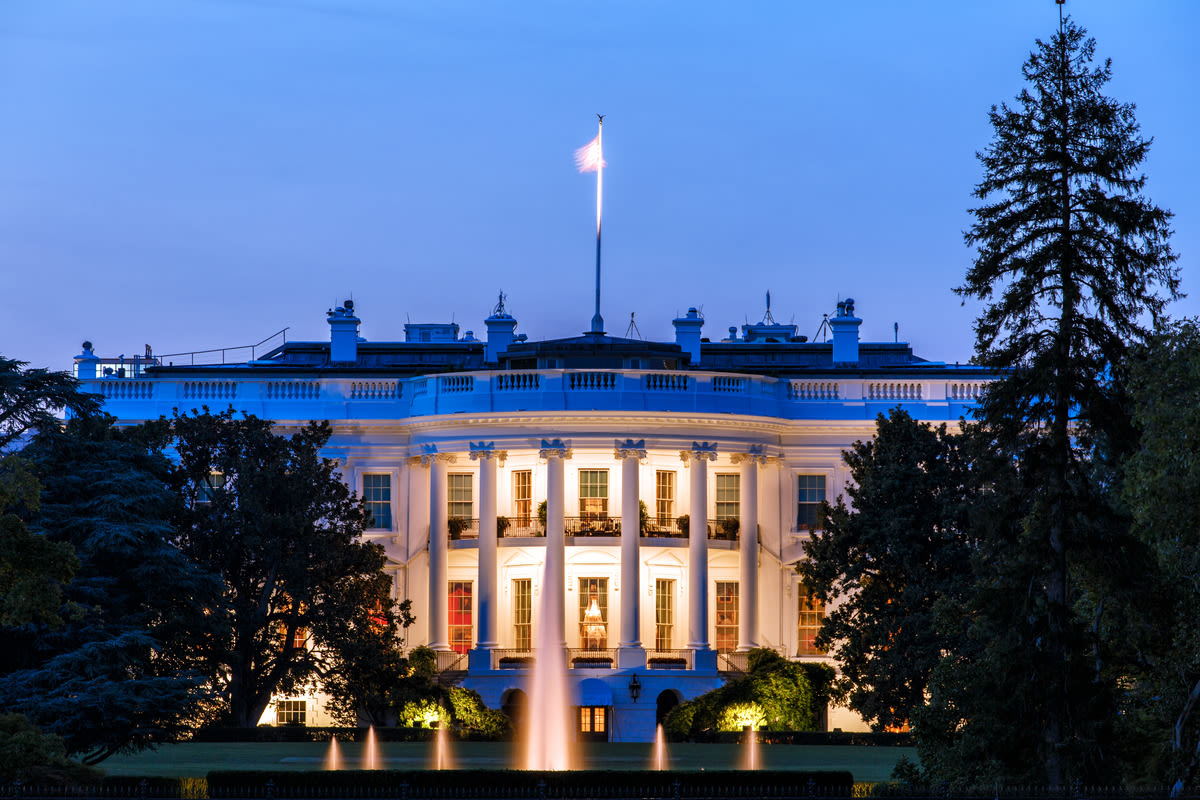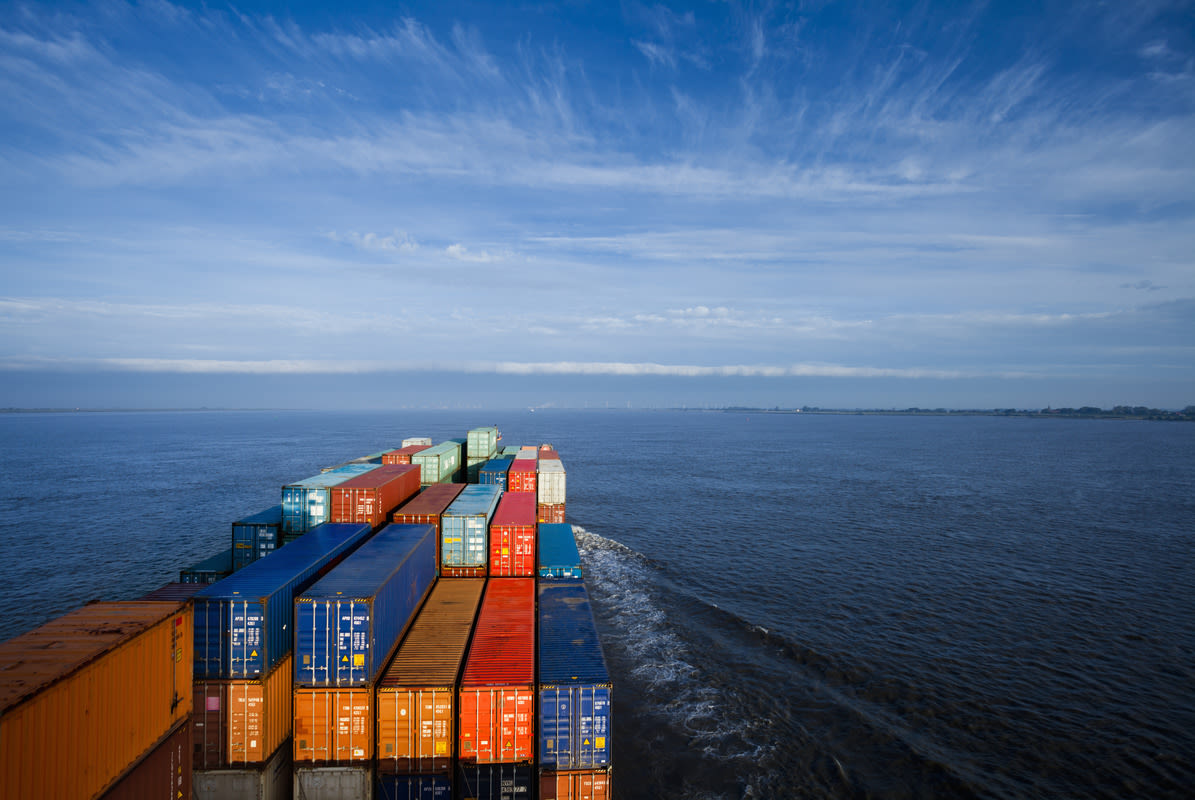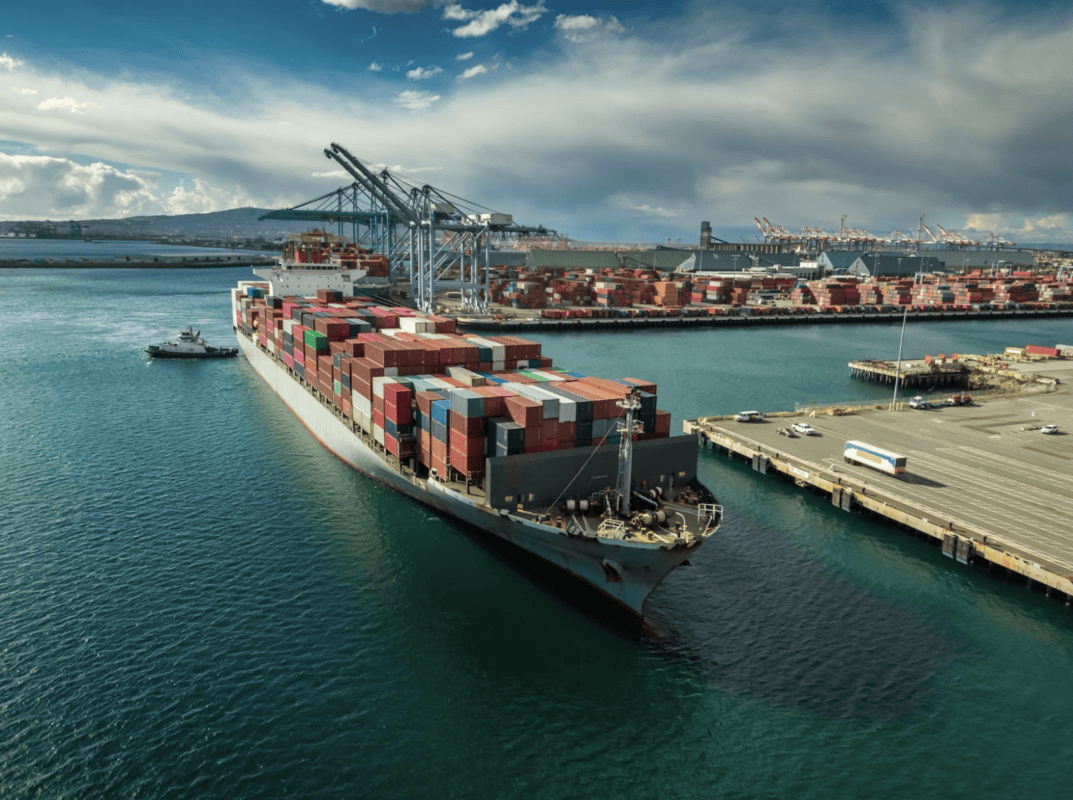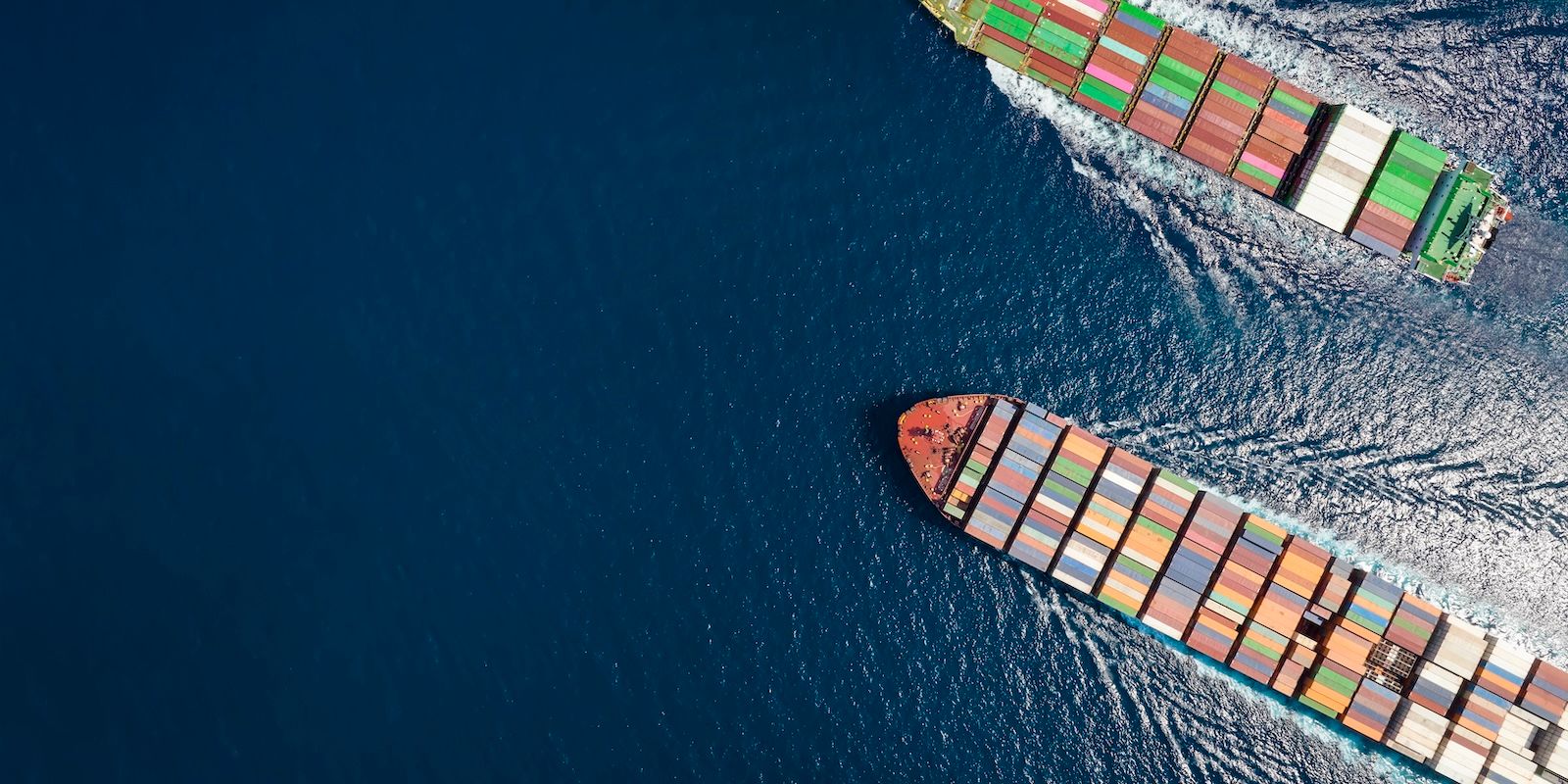
December 17, 2025
Live Updates: Trump Administration Tariffs, Trade Policy Changes, and Impacts on Global Supply Chains
Tags:

December 17, 2025
This live blog contains all updates from September 5 onwards. Find earlier updates from late June - early September here, updates from March - mid-June here, and all older updates (including our original blog on the 2024 election) here.
Calculate and analyze tariff impacts in real time with the Flexport Tariff Simulator.
Updated December 17, 2025:
Per Federal Register notice, the U.S. has implemented certain elements of the previously announced joint trade framework with Switzerland and Liechtenstein. Applicable retroactive to November 14, 2025, these provisions include:
- Goods originating from Switzerland or Liechtenstein are subject to a minimum U.S. tariff of 15%: the higher of either the U.S. most-favored-nation (MFN) tariff rate or a 15% rate composed of the MFN tariff and a reciprocal tariff.
- The U.S. has adjusted tariff rates on some imports from Switzerland and Liechtenstein, including certain agricultural goods, unavailable natural resources, aircraft and aircraft parts, and generic pharmaceuticals and their ingredients.
If the U.S., Switzerland, and Liechtenstein do not finalize a full trade agreement by March 31, 2026, the U.S. intends to review and reconsider these duty modifications.
Updated December 16, 2025:
The EU has announced upcoming duties and fees for parcels valued under €150: a €3 customs duty will take effect in July of 2026, and a separate handling fee will take effect in November of 2026.
Additionally, several individual EU member states intend to introduce their own handling fees for low-value parcels, which will be charged on top of bloc-wide fees. The Netherlands will introduce a national handling fee sometime after February 1, 2026, while other states may introduce fees earlier in the year. The Dutch government is currently coordinating with other EU states to avoid a “waterbed effect,” or a situation in which trade shifts to countries with delayed implementation.
Learn more about upcoming changes and potential impacts on ecommerce businesses here.
Updated December 12, 2025:
Today, the U.S. and Mexico reached an agreement on water delivery obligations. The agreement comes a few days after President Trump suggested the possibility of an additional 5% duty on Mexican goods if Mexico did not release 200,000 acre-feet of water to the U.S. before the end of the year.
Per today’s agreement, Mexico will release a total of 202,000 acre-feet of water, commencing deliveries earlier this week. The two nations will finalize a comprehensive plan by the end of January of 2026.
Updated December 10, 2025:
Today, Mexico’s Congress approved tariffs of up to 50% on China and certain other nations without a trade agreement with Mexico. These duties will take effect in January of 2026.
President Trump has repeatedly pressured Mexico’s President Claudia Sheinbaum to minimize Mexico’s reliance on China, and has raised concerns that Mexico is a “backdoor” for Chinese goods entering the U.S. under United States-Mexico-Canada Agreement (USMCA) trade terms. Mexico’s tariff announcement comes ahead of next year’s scheduled USMCA review and re-negotiation process.
Chinese exports to Mexico have surged in recent years, accounting for about 20% of all Mexican imports in 2024. Mexico’s upcoming duties will significantly impact Chinese auto exports in particular, with 20% of all cars sold in Mexico last month originating from China.
Separately, the U.S. Trade Representative (USTR) has announced an upcoming 10% Section 301 tariff on Nicaragua. This duty is set to take effect on January 1, 2027, and will increase to 15% on January 1, 2028. The upcoming tariff will stack on top of other applicable tariffs, including most-favored-nation (MFN) rates and the existing 18% reciprocal tariff on Nicaraguan goods. Goods that comply with the Dominican Republic-Central America-United States Free Trade Agreement (CAFTA-DR) will be exempt from the upcoming tariff.
Finally, U.S. Trade Representative Jamieson Greer stated today that the U.S. may attempt to overhaul some aspects of the USMCA next year, during the first joint review of the agreement in early July. According to Greer, the U.S. intends to focus specifically on re-negotiating rules of origin for non-automobile products.
When negotiating rules of origin ahead of the initial launch of the USMCA in 2018, the U.S. had prioritized domestic auto production. With those rules of origin for autos in effect, and given the introduction of Section 232 auto tariffs this year, the Trump administration is now looking to prioritize U.S. production in other sectors by taking a “similar approach” to non-auto rules of origin.
Updated December 9, 2025:
The trade deal that the U.S. and Indonesia struck in July now faces an uncertain future, according to a Financial Times report. U.S. trade officials have indicated that Indonesia is now “backtracking” on its earlier commitment to eliminating non-tariff barriers on U.S. industrial and agricultural exports, as well as barriers to digital trade.
July’s trade agreement established a 19% U.S. tariff on Indonesia, while stipulating that Indonesia will eliminate non-tariff barriers on a range of U.S. exports. The 19% tariff took effect on August 7, alongside dozens of other modified country-specific reciprocal tariffs implemented that day. Other terms of the U.S.-Indonesia deal have yet to take effect, and are subject to change as negotiations continue.
Updated December 8, 2025:
President Trump announced on Truth Social today that he may impose an additional 5% tariff on Mexican goods if Mexico does not release 200,000 acre-feet of water—just over 65 billion gallons—before December 31. Beyond negatively impacting American farmers, he added, Mexico’s failure to release sufficient water from the Rio Grande and the Colorado River violates the nations’ long-standing cross-border water treaty.
Following President Trump’s announcement, President Claudia Sheinbaum affirmed Mexico’s commitment to the treaty and announced plans to release more water to the U.S. However, she indicated that an immediate large-scale water release may not be possible due to infrastructure limitations.
Separately, President Trump stated today that he may levy “severe tariffs” on Canadian fertilizer amid U.S. efforts to bolster domestic production. He did not indicate a timeline for implementation.
Canada is the U.S.’s largest supplier of potash, a potassium-based fertilizer. Currently subject to a 10% duty rate, Canadian-origin potash has accounted for more than 80% of all potash imported into the U.S. since 2020.
President Trump’s suggested duties on Mexico and Canada come amid a heightened focus on the U.S. agriculture sector. Earlier this week, President Trump announced that American farmers would receive $12 billion in the form of one-time bridge payments, funded by tariff revenue.
Updated December 3, 2025:
Per a notice released by the U.S. Trade Representative today, the U.S. is reducing tariffs on most Korean imports, including automobiles and auto parts.
Korean goods face a minimum tariff of 15%: retroactive to November 14, 2025, Korean goods with a <15% most-favored-nation (MFN) duty rate are subject to a total tariff of 15%, while Korean goods with a >15% MFN duty rate are subject only to that MFN duty. Korean autos and auto parts are subject to the same duty structure, retroactive to November 1 instead of November 14.
Finally, retroactive to November 14, Korean furniture and vanity products are subject to a reduced 15% Section 232 tariff, while certain Korean civil aircraft and aircraft parts are exempt from Section 232 and reciprocal duties.
Updated December 1, 2025:
Today, the U.S. and the U.K. announced an agreement in principle on pharmaceutical pricing. Per the agreement, the U.K. has agreed to a 25% increase in the net price it pays for new medicines, among other expenditure-related stipulations. In return, the U.S. will exempt U.K. pharmaceuticals, pharmaceutical ingredients, and medical technology from Section 232 tariffs, once those duties take effect. The U.S. will also abstain from targeting U.K. pharmaceutical pricing practices in any future Section 301 investigation that takes place during the rest of President Trump’s term.
Updated November 26, 2025:
The U.K. announced today that it intends to eliminate its duty-free exemption for goods valued under £135, with plans to implement a solution by March of 2029. Currently, low-value goods imported into the U.K. are only subject to value-added tax (VAT).
- The announcement comes just weeks after the EU announced the upcoming end of its own duty-free exemption for low-value parcels, while the U.S. officially eliminated the de minimis exemption back in August.
- The U.K. has opened a consultation for public input on upcoming procedures and changes, including tariff treatment for low-value parcels, data collection and compliance, potential administrative fees, and possible changes to VAT collection.
Separately, Mexico will introduce a series of customs reforms on January 1, 2026, including new regulatory controls on its Manufacturing, Maquiladora, and Export Services Industry (IMMEX) program.
- IMMEX, which allows foreign companies to temporarily import goods into Mexico duty-free for manufacturing or assembly prior to re-exportation, underwent a major overhaul in December of 2024, when President Claudia Sheinbaum implemented restrictions on many textile products imported through the program.
- These restrictions, in addition to the elimination of the U.S.’s de minimis exemption in August, have prompted many businesses to shift their fulfillment operations from Mexico to the United States.
- As part of Mexico’s upcoming reforms, businesses still leveraging IMMEX will see stricter documentation requirements governing the industrial processes that their products undergo in Mexico prior to re-exportation. Businesses will also be subject to tighter measures when it comes to documenting relevant transactions, contracts, and inventory records. Additionally, Mexico will also increase administrative penalties, with steep fines for non-compliance with certain import regulations.
Updated November 24, 2025:
At a meeting with EU ministers today, U.S. Secretary of Commerce Howard Lutnick and U.S. Trade Representative Jamieson Greer suggested a potential reduction in steel and aluminum duties on the EU, contingent upon the EU implementing a “balanced approach” to modifying digital regulations that impact major American technology companies.
Lutnick’s comments indicate a potential softening in the U.S.’s stance on digital regulation in the EU. In late August, President Trump had indicated plans to impose “substantial additional tariffs” on nations that do not remove digital taxes and regulations, along with potential restrictions on U.S. chip exports. While the EU does not impose any bloc-wide digital service taxes, EU regulations like the Digital Services Act and Digital Markets Act are designed to limit the power of major American technology companies.
Over the past few months, EU trade ministers have expressed concerns over the broad scope of the U.S.’s steel and aluminum duties, especially given the 407 HTS codes that the U.S. added to its list of covered derivative products back in August. Additionally, the U.S. and the EU have indicated that they would consider tariff rate quotas (TRQs) and other potential measures to address “overcapacity in steel and aluminum.” The U.S. and the EU have repeatedly referenced China, the world’s largest producer of both metals, in discussions concerning overcapacity challenges.
Updated November 20, 2025:
Today, President Trump signed an executive order expanding the list of products exempt from the additional 40% tariff on Brazil that took effect in early August. Detailed in Annex I of the order, these newly exempt products include Brazilian coffee and beef, among many other agricultural imports. These exemptions apply retroactively to goods entered or withdrawn for consumption on or after November 13, 2025.
Brazil was the biggest supplier of coffee to the U.S. in 2024, accounting for about 22% of total U.S. coffee imports by value.
Today’s order features many of the exemptions contained in President Trump’s November 14 order, which expanded the list of agricultural goods exempt from reciprocal tariffs. Brazilian goods covered under both orders are exempt from both the 10% reciprocal tariff on Brazil and the 40% additional tariff—i.e., fully exempt from IEEPA tariffs.
Updated November 14, 2025:
This afternoon, President Trump issued an executive order exempting certain agricultural imports from reciprocal tariffs. These products, detailed in Annex II of the order, include coffee; bananas, dates, citrus, and other fruits; beef cuts and liver; limited fresh vegetables; chocolate; a wide range of spices; animal fertilizers and other fertilizer products; and more. These exemptions apply retroactively to goods entered or withdrawn for consumption on or after November 13, 2025.
Today, the U.S. also announced a framework for a trade agreement with Switzerland and Liechtenstein. Under this framework, goods originating from Switzerland or Liechtenstein will be subject to the greater of either the applicable U.S. most-favored-nation (MFN) rate or a 15% rate composed of the MFN tariff and a reciprocal tariff. Pharmaceuticals and semiconductors from these nations will also face a maximum tariff of 15%, when those Section 232 cases are live. Additionally, Switzerland and Liechtenstein will remove certain non-tariff barriers to U.S. exports. The U.S., Switzerland, and Liechtenstein have not provided a timeline for implementing a finalized trade agreement.
Finally, the U.S. also announced frameworks for trade agreements with Argentina, Guatemala, Ecuador, and El Salvador. While the existing tariff rate on all four nations will remain in place, the U.S. intends to eliminate reciprocal tariffs on certain goods that “cannot be grown, mined, or naturally produced in the United States in sufficient quantities,” and on select products originating under the Dominican Republic-Central America Free Trade Agreement (CAFTA-DR). Meanwhile, all four nations will remove certain non-tariff barriers to U.S. agricultural products, digital services, pharmaceuticals, and more. These trade agreements are expected to be finalized in the coming weeks.
Updated November 10, 2025:
In a Truth Social post yesterday, President Trump indicated that each American, excluding high earners, will receive a tariff dividend of $2,000. The proposal would likely require Congressional approval.
U.S. Treasury Secretary Scott Bessent stated later that day that the tariff dividend could be paid out in a multitude of ways, including “tax decreases that we are seeing on the president’s agenda.”
Updated November 5, 2025:
Today, the U.S. Supreme Court heard oral arguments on the legality of the Trump administration’s IEEPA tariffs. The Court will likely take at least a few months to reach a decision; in the meantime, IEEPA tariffs will remain in effect.
During the hearing, several justices challenged the Trump administration’s assertion that the tariffs in question aim to “regulate importation” in response to rising trade deficits and a fentanyl-induced public health crisis. Justice Sonia Sotomayor in particular contended that these tariffs are ultimately taxes that generate revenue from American citizens.
Another point of contention: the process of refunding more than $90 billion in already-collected duties, should the Court rule against the Trump administration's tariffs. Justice Amy Coney Barrett raised concerns over how the refund process would work, and whether it would be “a complete mess.”
If the Supreme Court rules against the Trump administration’s tariffs, U.S. Customs and Border Protection (CBP) would halt duty collection immediately while implementing a refund process. Additionally, the Trump administration could potentially leverage other statutes—including Sections 301, 232, 122, and 338—to re-implement those tariffs or introduce new ones.
If the Supreme Court upholds the tariffs, on the other hand, the case could return to the lower courts for another review.
Updated November 4, 2025:
Tomorrow (November 5), the Supreme Court will hear oral arguments on the legality of President Trump’s International Emergency Economic Powers Act (IEEPA) tariffs.
Scope: The case directly covers IEEPA “fentanyl” tariffs on China, Canada, and Mexico, along with IEEPA reciprocal tariffs imposed by executive orders signed on April 2 and July 31. The case does not directly cover Section 232 tariffs, Section 301 tariffs, the additional 40% IEEPA tariff on Brazil implemented on August 6, or the 25% IEEPA “oil” tariff on India implemented on August 27.
Timing: After tomorrow’s oral arguments, the justices will deliberate, write and discuss draft opinions, and vote on a decision. In theory, the Supreme Court could reach a decision any time after the conclusion of oral arguments, but it is likely that it will take at least a few months. The Supreme Court could also announce its decision at “the end of term” next year, before the justices take their summer break—i.e., some time between May and July, when most decisions are announced.
Possible outcomes: In a broad sense, there are two general directions the Supreme Court could go. The actual specifics may vary.
- The Supreme Court could invalidate President Trump’s IEEPA tariffs, finding that IEEPA doesn’t give the president the authority to impose these duties. If so, U.S. Customs and Border Protection (CBP) would likely halt the collection of these tariffs immediately, while refunding tariff payments in some way.
- It is unclear how accommodating CBP would be in issuing refunds, or what discretion the court order would give CBP in how it can issue refunds. There may be a push for protests as a hedge against a potential procedural delay or invalidation.
- Alternatively, the Supreme Court could uphold President Trump’s usage of IEEPA.
- If that happens, the case could return to the lower courts for another review of certain aspects of the case. In this hypothetical review, the lower court could strike down some portions of President Trump’s tariffs while upholding others, or potentially limit which situations President Trump can leverage IEEPA to impose tariffs.
Updated November 3, 2025:
The U.S. and China will soon begin implementing the provisions that President Trump and President Xi agreed upon during last week’s meeting. Per a fact sheet released by the White House over the weekend, these actions include:
- The U.S. will reduce its “fentanyl” tariff on China from 20% to 10% on November 10, 2025. In response, China will take measures to halt the shipment of certain chemicals into North America and other destinations. Additionally, the U.S. will keep the existing 10% reciprocal tariff rate on China in place until November 10, 2026.
- Effective November 10, 2025, the combined effective duty rate on China will be approximately 45%: a 10% reciprocal tariff, a 10% “fentanyl” tariff, and up to 25% in Section 301 tariffs.
- The U.S. will keep in place certain Section 301 tariff exclusions, previously due to expire on November 29, 2025, until November 10, 2026.
- Effective November 10, 2025, the U.S. will suspend port fees on Chinese vessels for one year. China has also pledged to remove retaliatory port fees on American vessels for one year.
- China will suspend all retaliatory tariffs and non-tariff countermeasures against the U.S. that have been implemented since March 4, 2025.
- China will suspend the global implementation of its latest rare earth export controls. China will also issue general export licenses for certain rare earth metals that will benefit U.S. end-users and their suppliers, which means “the de facto removal of controls China imposed in April 2025 and October 2022.”
- China will purchase at least 12 million metric tons of U.S. soybeans in the last two months of 2025, and at least 25 million metric tons each year between 2026 and 2028. China will also resume purchases of U.S. sorghum and hardwood logs.
Updated October 30, 2025:
President Trump and President Xi met earlier today in South Korea. While the two leaders did not finalize a trade agreement, President Trump told reporters that one may be signed “pretty soon,” and that he intends to visit China for another round of talks in April. Provisions agreed upon during today’s meeting include:
- A reduction in “fentanyl” tariffs: Effective immediately, President Trump will lower the U.S.’s “fentanyl” tariff on China from 20% to 10%, citing President Xi’s commitment to curbing the flow of fentanyl precursors from China to the U.S. This change awaits official confirmation via executive order or Federal Register notice. This reduction would bring the combined duty rate on China to approximately 45%: a 10% reciprocal tariff, a 10% “fentanyl” tariff, and up to 25% in Section 301 tariffs.
- Delayed rare earth export controls: China will delay the implementation of its latest set of rare earth controls, which include a licensing requirement for those exporting or re-exporting rare earth products that originated in China or were produced with Chinese technology, for one year. This agreement will be re-negotiated each year.
- Increased soybean purchases: China will purchase a “tremendous” number of American soybeans, President Trump said. Historically the biggest buyer of American soybean exports, China had not purchased any soybean shipments this season, with China’s retaliatory tariffs driving up prices. However, in the days leading up to today’s meeting, China purchased its first soybean cargoes of the season.
- A pause in reciprocal port fees: The U.S. will suspend its recently implemented port fees on Chinese vessels for one year. In response, China will suspend its retaliatory port fees on American vessels for one year.
- Access to American semiconductor chips: President Trump told reporters that today’s meeting involved discussions of semiconductor trade, and that China is “going to be talking to Nvidia and others about taking chips.”
- Energy purchases: President Trump stated that China will begin the process of purchasing American energy, which may include a potential large-scale oil and gas deal in Alaska.
Updated October 27, 2025:
Yesterday, U.S. Treasury Secretary Scott Bessent stated that the U.S. and China had reached a “substantial framework” for President Trump’s and President Xi’s in-person meeting this Thursday in South Korea. Key negotiation topics include:
- Rare earth exports: At Thursday’s meeting, Bessent anticipates that “we will get some kind of deferral on the rare earth export controls that the Chinese had discussed.” Earlier this month, China announced its latest set of rare earth controls, including a licensing requirement for those exporting or re-exporting rare earth products that originated in China or were produced with Chinese technology. Bessent indicated on October 15 that these export controls are a deciding factor in whether President Trump proceeds with implementing the 100% tariff increase on November 1.
- Soybean purchases: China has long been the biggest purchaser of American soybean exports. But given China’s retaliatory tariffs on a wide range of American goods this year, Chinese demand for American soybeans has dropped significantly. On Sunday, Bessent stated that soybean farmers will be “extremely happy with this deal for this year and for the coming years,” but did not provide any further specifics.
- Fentanyl: President Trump has cited the “flow of fentanyl precursors” as justification for imposing IEEPA “fentanyl” tariffs on nations like China, which currently faces a 20% “fentanyl” levy under the existing tariff truce. In Sunday’s interview, Bessent added that “we will be able to discuss [China] helping us get this terrible fentanyl crisis under control.”
If the U.S. and China fail to reach an agreement before November 1, President Trump has indicated that tariffs on China could rise to 155%: a 100% hike on top of the existing rates, which consist of a 10% reciprocal tariff, a 20% “fentanyl” tariff, and up to 25% on certain products with the Section 301 tariff.
Separately, President Trump signed reciprocal trade deals yesterday with three Southeast Asian nations: Cambodia, Malaysia, and Thailand. Under these new agreements, most goods from the three nations will remain subject to a 19% reciprocal tariff rate, but select goods—including certain aerospace products and pharmaceuticals—will be exempt from tariffs.
President Trump also signed memorandums of understanding with Thailand and Malaysia that will increase critical mineral exports to the United States. While these agreements may reduce U.S. dependence on China for minerals and rare earths, China maintains a monopoly on the world’s rare earth supply, including 70% of global mining capacity and 90% of global processing.
Updated October 22, 2025:
At a news conference yesterday, President Trump confirmed that tariffs on Chinese goods may rise to 155% on November 1 if the U.S. and China fail to reach a trade agreement by then. President Trump initially proposed the 100% tariff hike in an October 10 Truth Social post.
“China is [currently] paying 55%,” he said yesterday, referring to the combined duty rate on China under the existing tariff truce: a 10% baseline reciprocal tariff, a 20% “fentanyl” tariff, and a 25% Section 301 tariff implemented during President Trump’s first term.
President Trump also confirmed that he still intends to meet with President Xi at next week’s Asia-Pacific Economic Cooperation (APEC) Forum in South Korea. At that meeting, “I expect we’ll probably work out a very fair deal with China,” President Trump said yesterday.
Updated October 21, 2025:
President Trump may soon announce increased tariffs on Colombia, after telling reporters on Sunday (October 19) that he planned to announce the new tariff rate as soon as yesterday. Prior to announcing those plans, President Trump wrote on Truth Social that Colombian President Gustavo Petro is “strongly encouraging the massive production of drugs,” and that the U.S. would soon halt all aid to Colombia. The U.S. currently imposes a 10% tariff on Colombian imports.
Separately, the Trump administration is considering plans to impose tariffs as high as 100% on Nicaraguan imports, either immediately or phased in over a period of up to 12 months. The announcement comes after the U.S. Trade Representative (USTR) completed a Section 301 probe into unfair trade practices, with yesterday’s report indicating “pervasive abuses of labor rights, restrictions on the right to property and religious freedom, and the elimination of rule of law” in Nicaragua, all of which place “burdens or restrictions on U.S. commerce.”
The USTR report also proposes that the U.S. either fully or partially suspend benefits to Nicaragua under the Dominican Republic-Central America-United States Free Trade Agreement (CAFTA-DR). Suspending these benefits would particularly impact Nicaraguan exports of yarn, fabric, and apparel.
Updated October 20, 2025:
On Friday evening (October 17), President Trump issued a proclamation that will implement a 25% tariff on medium- and heavy-duty trucks (MHDVs) and their parts beginning November 1. Buses and other vehicles classified under HTSUS heading 8702 will be subject to a 10% tariff.
USMCA: According to the proclamation, importers of USMCA-compliant MHDVs may submit documentation detailing the amount of U.S. content in each truck, and pay the 25% tariff only on non-U.S. content. This is the case with USMCA-compliant automobile imports.
- USMCA-compliant MHDV parts will be exempt from the 25% tariff until the Secretary of Commerce and U.S. Customs and Border Control (CBP) establish a process for applying the tariff to MHDVs' non-U.S. content. Meanwhile, knock-down kits and equivalent parts compilations will be subject to the 25% tariff, regardless of USMCA preferential treatment qualification.
- According to data from the International Trade Administration, the U.S. imported nearly $21 billion’s worth of medium- and heavy-duty trucks in 2024 alone. Mexico was the biggest supplier (about 74%) of last year's imports, followed by Canada (just over 20%).
Other exemptions: MHDVs and buses that were manufactured 25+ years before their date of entry will be exempt from these tariffs.
Stacking: MHDV tariffs will follow the same stacking order as automobile and auto part tariffs. In other words, imports subject to MHDV tariffs will be exempt from other Section 232 tariffs (steel, aluminum, copper, and timber) and IEEPA tariffs (reciprocal, “fentanyl” on Canada and Mexico, and other levies).
Updated October 15, 2025:
At a press conference earlier today, U.S. Treasury Secretary Scott Bessent suggested a potential extension of the 90-day U.S.-China tariff truce, which is set to conclude on November 10. If President Trump proceeds with implementing a 100% tariff on China on November 1, however, the two nations will face a tighter timeline for reaching an agreement. According to Bessent, a deciding factor is whether China delays or scraps upcoming export controls on rare earth metals, which remain a long-standing point of contention in U.S.-China trade talks.
On Sunday (October 12), two days after initially announcing the potential 100% tariff on China, President Trump appeared to soften his stance: “Don’t worry about China,” he wrote on Truth Social. “Highly respected President Xi just had a bad moment.” It is currently unclear whether President Trump and President Xi will meet as planned in South Korea at the end of October. While President Trump stated on October 10 that “there seems to be no reason” to proceed with the meeting, Bessent indicated a few days later that these plans are still in place.
Additionally, per a recent U.S. Trade Representative (USTR) notice, the U.S. will impose a 100% duty on certain Chinese ship-to-shore cranes and cargo handling equipment on November 9.
Finally, U.S. port fees on Chinese vessels went into effect on October 14. The USTR has indicated that vessels subject to fee modifications, including Liquified Gas Carriers and roll-on/roll-off vessels, may defer fee payments until December 10.
Updated October 10, 2025:
President Trump announced on Truth Social today that he intends to impose a 100% tariff on China beginning November 1, “over and above any tariff that they are currently paying.” The U.S. will also impose export controls on critical software, President Trump added.
Earlier today, President Trump had suggested a “massive increase” in tariffs on China, citing China’s export controls on rare earth metals and “other elements that they have quietly amassed into somewhat of a monopoly position.”
Today’s announcement comes exactly one month before the U.S.-China tariff truce concludes on November 10. Ahead of that deadline, President Trump and President Xi were due to meet in person at South Korea’s Asia-Pacific Economic Cooperation (APEC) Forum at the end of October. However, President Trump indicated today that “now there seems to be no reason to do so.”
Separately, China has announced countermeasures against upcoming U.S. port fees on Chinese vessels. American-owned or American-operated vessels, along with any vessels built in the U.S., will face a fee of CN¥400 (~$56) per net ton when berthing at a Chinese port. These fees will take effect on October 14—the same day U.S. fees on Chinese vessels take effect—and will increase in line with the U.S.’s fee schedule.
Updated October 7, 2025:
CBP confirmed yesterday on a trade outreach call that it will not issue any refunds, whether by check or ACH, during the government shutdown. That includes any payment involving a check from the Treasury Department, such as drawback claim payments, protests, and post-summary corrections. Read more about government shutdown impacts on federal agency operations and duty refunds here.
Updated October 6, 2025:
Today, President Trump announced on Truth Social that medium- and heavy-duty trucks will face a 25% tariff beginning November 1, 2025. President Trump had previously indicated that heavy truck tariffs would take effect on October 1, but did not provide further details on implementation by that date.
According to data from the International Trade Administration, the U.S. imported nearly $21 billion’s worth of medium- and heavy-duty trucks in 2024 alone. If these tariffs take effect, USMCA partners would bear the brunt of the impact: Mexico was the biggest supplier (about 74%) of last year's imports, followed by Canada (just over 20%).
- USMCA exemptions: For medium- and heavy-duty trucks that fall under the USMCA, it is currently unclear whether these tariffs would apply only to trucks’ non-U.S. content, as is the case with USMCA-compliant automobiles. In general, to qualify for partial duty relief under USMCA rules of origin, the following content must originate from North America: at least 64% of the truck’s value; at least 75% of its engines, axles, transmissions, and other core components; and at least 70% of the manufacturer’s annual steel and aluminum procurement.
Separately, the U.S. Trade Representative (USTR) has outlined payment procedures for upcoming fees on Chinese-built and operated vessels, which are set to be implemented on October 14, 2025. Guidance is as follows:
- The burden is on the vessel operator (rather than U.S. Customs and Border Protection (CBP)) to determine if the vessel owes a fee.
- Upcoming fees will be paid directly to the Department of the Treasury, not at the port of entry.
- Vessels without proof of payment may be denied lading/unlading or clearance. The USTR strongly encourages responsible parties to pay fees at least three business days before vessel arrival.
Beginning October 14, Chinese vessel owners/operators calling at a U.S. port will face a fee of $50 per net ton. Chinese-built ships will be subject to a fee of $18 per net ton or $120 per container, whichever is higher. For a complete breakdown of upcoming Chinese vessel fees and exemptions, visit our blog.
Updated September 30, 2025:
Last night, President Trump issued an executive order that will implement tariffs on lumber, upholstered furniture, kitchen cabinets, and bathroom vanities. These duties will take effect on October 14, not October 1. Duty rates stipulated in the order include:
- Softwood timber and lumber: 10%
- Certain upholstered furniture: 25%, except the EU and Japan (15% cap) and the U.K. (10% cap)
- Applicable HTS codes: 9401.61.4011, 9401.61.4031, 9401.61.6011, and 9401.61.6031
- Certain kitchen cabinets and bathroom vanities: 25%, except the EU and Japan (15% cap) and the U.K. (10% cap)
- Applicable HTS codes: 9403.40.9060, 9403.60.8093, and 9403.91.0080
Note that these rates differ from those mentioned in President Trump’s Truth Social posts yesterday. However, per the order, the rates President Trump indicated on Truth Social (30% on upholstered furniture and 50% on kitchen cabinets and vanities) will take effect on January 1, 2026, and will apply to any country that does not have a trade agreement in place with the U.S.
Additionally:
- These tariffs will be eligible for duty drawback, unlike other Section 232 tariffs.
- Tariff stacking: Goods subject to these tariffs will be exempt from IEEPA reciprocal tariffs, the 40% IEEPA tariff on Brazil, and the 25% IEEPA “oil” tariff on India. This is similar to other Section 232 tariffs.
- Depending on the shipment’s country of origin and date of entry for consumption, this may result in an effective duty savings between October 14 and December 31.
- Chapter 44 HTS codes will be removed from the IEEPA reciprocal exemption list (Annex II) for all goods entered or withdrawn for consumption on or after October 14.
Finally, the order suggests the possibility of upcoming duties on hardwood timber and lumber, pending an investigation that will conclude by October 1, 2026.
Calculate these duty and landed cost impacts in real time with the Flexport Tariff Simulator.
Updated September 29, 2025:
This morning, President Trump indicated on Truth Social that he intends to impose “substantial tariffs on any country that does not make its furniture in the United States,” citing the loss of North Carolina’s furniture business to China and other nations. It is unclear exactly which furniture imports would be impacted, or when these potential new tariffs would take effect.
President Trump had previously announced a 30% tariff on upholstered furniture beginning October 1, pending confirmation via executive order or Federal Register notice. Additionally, President Trump has yet to confirm specifics on tariff stacking for all potential new duties on October 1, including those applicable to upholstered furniture, heavy trucks, pharmaceuticals, kitchen cabinets, and bathroom vanities.
In a separate Truth Social post this morning, President Trump also announced plans to levy a 100% tariff on “any and all movies that are made outside of the United States.” How and when this tariff would be imposed remains unclear.
Updated September 26, 2025:
The Trump administration announced plans for sweeping new tariffs going into effect on October 1, 2025, targeting a wide range of imported goods, including heavy trucks, upholstered furniture, home fixtures and cabinetry, and pharmaceuticals. No executive order has been issued, and no notice has been published in the Federal Register at this time.
Should these tariffs take effect, heavy trucks will face a 25% tariff, kitchen cabinets and bathroom vanities 50%, upholstered furniture 30%, and branded or patented pharmaceuticals up to 100%. The pharmaceutical tariff would not apply for companies that are “building U.S. manufacturing plants,” defined as “breaking ground” or “under construction." The move is being framed as a national security measure under Section 232 of the Trade Expansion Act, positioning the tariffs as a way to protect domestic manufacturing and reduce reliance on foreign supply chains.
Overall, the tariff hikes could place immediate financial and operational pressure on importers while creating long-term incentives for shifting production to the U.S. or diversifying suppliers.
Updated September 16, 2025:
Effective September 16, 2025 (retroactive to August 7), the U.S. is rolling out new tariff rules to the U.S.–Japan Agreement. The latest includes a 15% baseline tariff on most Japanese imports. If the existing duty on affected goods is below 15%, an additional duty will be applied to bring it up to that threshold; if the rate is already 15% or higher, no extra duty applies. Some categories, like generic pharmaceuticals, certain natural resources, and civil aircraft, are exempt. Raw materials already affected by Section 232 duties, like steel, aluminum, and copper, are unaffected.
Automobiles and auto parts also shift into this framework: instead of being subject to 25% duties under Section 232, they now follow the 15% baseline rule. This is also effective as of September 16.
U.S. importers should immediately review shipments from Japan since August 7 to identify refund opportunities and assess cost impacts under the 15% baseline structure. For sectors like car manufacturers and pharmaceuticals, the carve-outs could ease pressure compared to broader tariff hikes, but origin rules and classification will be critical. Strategically, the deal ties tariff relief to economic commitments from Japan, primarily via large purchases of U.S. agricultural goods and energy and over $500 billion in investments in the U.S. This means future tariff stability depends on Japan delivering its commitments, creating both new opportunities and compliance risks for companies operating in U.S.–Japan trade flows.
Updated September 9, 2025:
The Supreme Court has agreed to hear arguments on the legality of President Trump’s IEEPA tariffs, with oral arguments scheduled to take place in early November. IEEPA tariffs will remain in place for the time being.
Today’s announcement comes less than a week after President Trump petitioned the Supreme Court for an expedited ruling on a federal appeals court decision that found his IEEPA duties illegal.
If the Supreme Court upholds the federal appeals court’s ruling, many businesses would potentially qualify for refunds.
Updated September 8, 2025:
Effective today (September 8), President Trump has modified the scope of Annex II, a list of products exempt from IEEPA reciprocal tariffs. The executive order impacts pharmaceuticals, semiconductors, energy products, and other goods. Per the order:
- 52 new HTS codes have been added to Annex II.
- 131 HTS codes have been removed from Annex II.
- Nearly all copper products have been removed from Annex II, presumably because they are now tariffed under Section 232.
Additionally, Annex III to the executive order contains 1,908 HTS subheadings that potentially qualify for a reciprocal tariff exemption, provided that the country of origin has finalized an agreement on reciprocal trade with the United States.
Analyze these tariff and landed cost impacts in real time with the Flexport Tariff Simulator.
Updated September 5, 2025:
Yesterday, President Trump published an executive order that will implement a trade deal between the U.S. and Japan. The order outlines the following:
- The U.S. will impose a baseline tariff of 15% on most Japanese imports.
- Goods with a most-favored-nation (MFN) tariff of less than 15% will be subject to a duty of 15%.
- Goods with an MFN tariff that exceeds 15% will only be subject to that MFN tariff rate.
- The U.S. will also impose separate sector-specific duties on Japanese autos and auto parts, aerospace products, generic pharmaceuticals, and natural resources that are not available or not produced in the United States. Goods subject to any of these sector-specific duties are exempt from reciprocal duties.
- Duties on autos and auto parts will be reduced from 25% to 15%.
- Japan will invest $550 billion in the United States and ramp up purchases of American agricultural goods.
- Japan will expand market access for American manufacturers across key sectors, including aerospace, agriculture, and energy.
The modified tariff structure will take effect within seven days of the order’s publication in the Federal Register, and will apply retroactively to Japanese goods that are “entered for consumption or withdrawn from warehouse for consumption” on or after August 7, 2025.
About the Author

December 17, 2025





